Fix: Windows Keyboard not Working at Login
We encountered a situation where users were unable to access their keyboard at the login screen in Windows 10. When prompted to enter their password, the keyboard doesn’t work, preventing access to the computer.
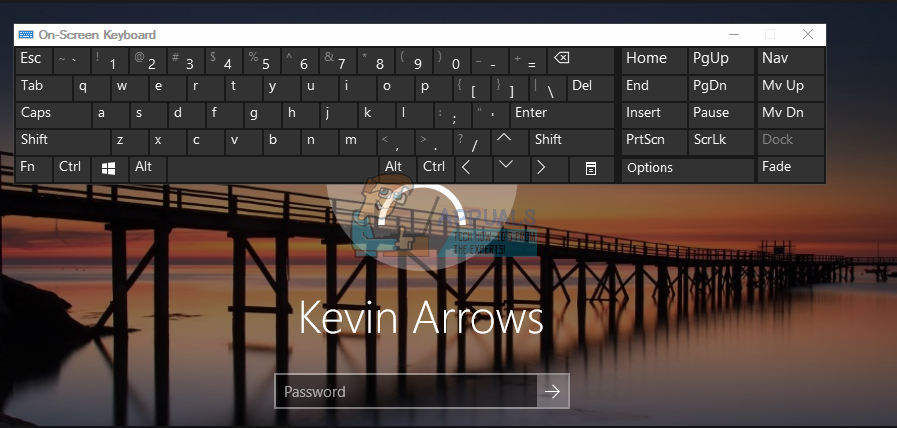
This issue resurfaces periodically and can have multiple causes. Microsoft officials have officially acknowledged this scenario and released an update to fix it. We will go through all the possible situations and iterate through the solutions, starting with the easiest one and working our way down.
What causes the Keyboard not to Work at the Login screen in Windows 10?
As mentioned before, several different reasons may prevent your keyboard from being accessible at the login screen. These can range from a Windows update to physical damage to your hardware. Here are some of the reasons:
- Windows update: Whenever Windows Update installs a patch, it also installs the latest drivers. If the drivers aren’t updated, you won’t be able to use some essential devices (like the keyboard) until you update them manually.
- Filter keys bug: There is a known bug in Windows where enabling filter keys prevents the use of the keyboard on the login screen.
- Hardware fault: This is probably the main reason your keyboard isn’t working. If your keyboard or its port is physically damaged, it will not connect.
- Externally connected devices: External devices might conflict with your keyboard and prevent it from operating.
- System in an error state: This is common and may cause more problems than just a non-working keyboard. Power cycling the entire setup usually fixes the issue.
- Incorrect drivers: If incorrect drivers are installed for your keyboard, it will not be able to communicate with the operating system.
- Legacy support for the keyboard: If you are using an older keyboard and legacy support in the BIOS is not enabled, you will experience this error.
Since the solutions are extensive and may vary case by case, we recommend starting with the first solution and working your way down accordingly.
Solution 1: Check the Keyboard and Change the Port
The first thing to check is whether your keyboard is working and in good condition. If you have connected a faulty keyboard, you won’t be able to use it. Try connecting another keyboard and check if you can input properly.
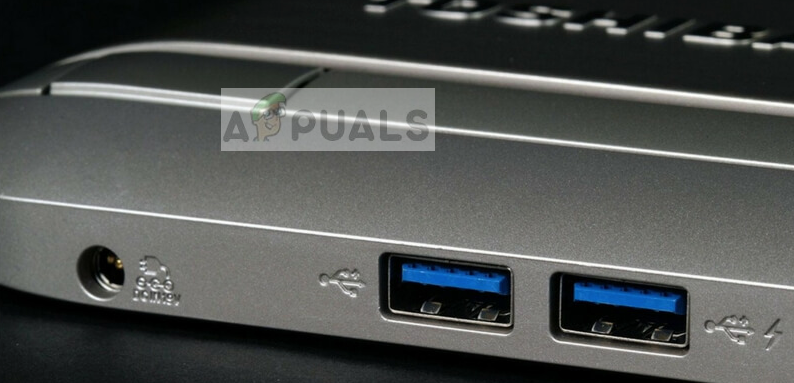
Also, disconnect all external devices except your keyboard and mouse. Other external devices can conflict with your main keyboard. Try changing ports. If the keyboard is plugged into the front USB slot, connect it to the back and see if you can input. You can also try connecting your keyboard to another computer to check if it works there. Once you are sure that your keyboard is working, proceed with the other solutions.
Solution 2: Power Cycle your Computer
Before moving on to more extensive solutions, note that some users regained control of their keyboard after power cycling their entire system. Power cycling involves shutting down your computer completely and removing the power outlet. This eliminates any bad configurations and refreshes the system.
- Shut down your computer properly.
- Once it is turned off, remove the power outlet or, if you are using a laptop, remove the battery.
- Press and hold the power button for a few seconds to ensure that all power is drained.

Power cycling computer - After waiting for 2-4 minutes, plug everything back in and check if the issue is resolved.
Solution 3: Disable Filter Keys
Filter keys is an accessibility feature in Windows that allows the computer to ignore brief and repeated keystrokes. There is a known bug where Filter Keys conflict and cause no input at all. We will disable Filter Keys from the login screen to see if this resolves the issue.
- Turn on your computer and let the login screen load.
- Once the login screen is loaded, click the Accessibility icon at the bottom-right of the screen.

- If the Filter Keys are turned on, turn them off by toggling the option once using your mouse.
- Once done, try inputting through your keyboard and check if the issue is resolved. You can also re-plug your keyboard and see if it helps.
Solution 4: Use On-Screen Keyboard and Reinstall Drivers
If the above solutions don’t work and you cannot access your Windows account through the login screen, you can use the on-screen keyboard to troubleshoot further. In this solution, we will try reinstalling your keyboard drivers from the Device Manager to see if it makes any difference.
- Turn on your computer and let the login screen load.
- On the login screen, click the Ease of access button and then click on-screen keyboard.

- A virtual keyboard will appear on the screen. Use your mouse to type your password to enter your account.
- Once logged in, make use of your mouse and click Start.
- Click on the gears icon to open Settings. In the Settings menu, click on Ease of Access.
- Select Keyboard from the left navigation pane and toggle the on-screen keyboard option on.

- You now have the on-screen keyboard to troubleshoot the error. Next, we will try to reinstall the keyboard drivers.
- Press Windows + R, type “devmgmt.msc” in the dialogue box, and press Enter.
- In the Device Manager, expand the Keyboards category. Select your keyboard, right-click on it, and select Uninstall device.
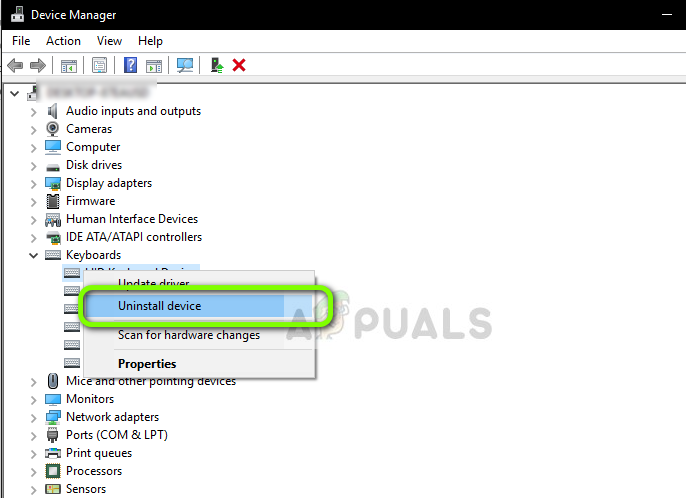
- If you have more than one keyboard driver, repeat the process for each one. Now restart your computer and check if the keyboard works. You can also try re-plugging it at this point.
Solution 5: Update Windows (Installing KB4090913)
Previous Windows updates are known to install incomplete drivers for your keyboard. Microsoft released another patch to fix this issue, ensuring that proper drivers are installed on your computer. We will update Windows to the latest build and see if this fixes the problem. Ensure you have an active internet connection and are logged in as an administrator.
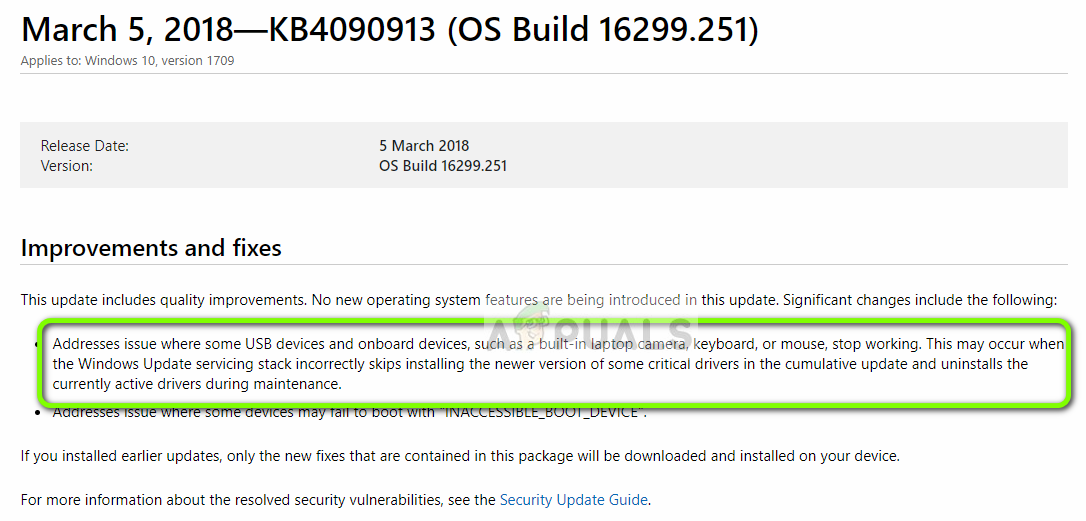
- Log into your computer using the on-screen keyboard as described in the previous solution.
- Once the on-screen keyboard is working, press Windows + R, type “update” in the dialogue box, and open the Settings.
- Click Check for updates at the top. Windows will automatically search for the latest updates and install them on your computer.
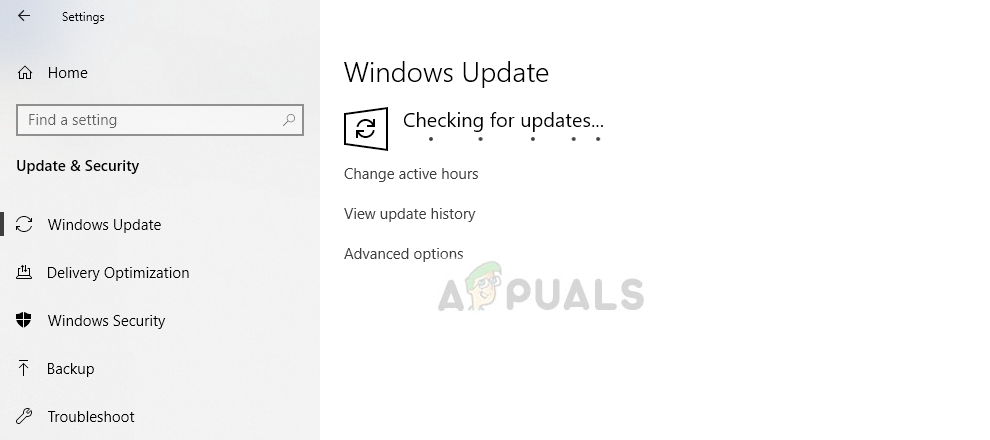
- Restart your computer after the update is complete and check if you can use the keyboard again.
Solution 6: Enable Keyboard Support (BIOS)
If you have an older computer and have plugged in a new USB keyboard, you might not be able to access it because the USB keyboard support in the BIOS is not enabled. You might find a button on your motherboard or try unmounting your boot drive to go directly into the BIOS without a keyboard. You can search for your specific model for more insight.
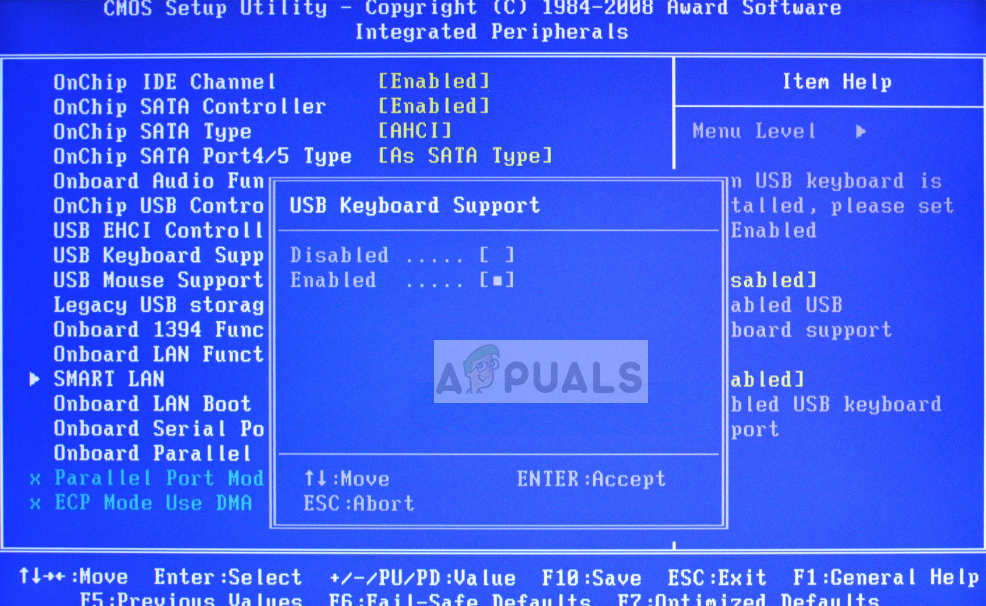
Navigate to your BIOS settings and check if USB Keyboard Support or Legacy Keyboard Support is enabled. If it is turned off, turn it on and check if you can access the keyboard on your login screen.




